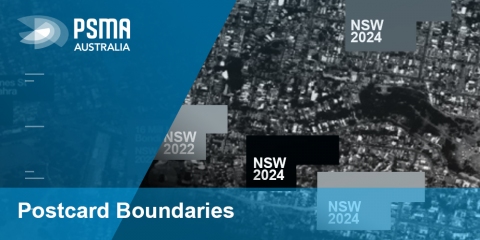The foundation geocoded address database for Australian businesses and governments
G-NAF
PSMA’s G-NAF dataset contains all physical addresses in Australia. It is the most trusted source of foundation geocoded addresses for Australian business and government.
G-NAF is built from addresses supplied by 10 contributors including the land agencies in each state and territory of Australia. The data is then:
- independently examined and validated
- matched textually and spatially.
Over 30 million contributed addresses are distilled into more than 13.5 million G-NAF addresses.
More than just an address
G-NAF is a complex dataset consisting of more than 30 tables of data. For each of the 13.5+ million principal addresses, metadata enhances the usability of G-NAF. This metadata captures:
- Principals and aliases. Sometimes a property has multiple addresses. For example, an apartment block may be listed as 5–7 Smith Road or 5 Smith Road. The G-NAF production process produces information detailing the variations that exist between the addresses that people use and official principal addresses. The address provided by the custodian is considered the principal and any other addresses are known as aliases.
- Geocode. This is a set of longitude and latitude values to enable the location of the address to be shown on a map. A geocode facilitates further manipulations, such as calculating the distance between the address and another point, such as waterways for risk assessments or nearest delivery vehicle for job allocation. Over 95% of addresses in G-NAF (including aliases) have an address level geocode.
- Mesh block identifier. A mesh block is the smallest geographic region used by the ABS. The application of a mesh block ID to each G-NAF address (including a quality placement indicator) facilitates linkages to relevant demographic and socio-economic data.
- Confidence levels. Each address is given a confidence level to indicate how many contributors support it. Not all contributors are exposed to all addresses, for example, jurisdictional addresses may not cover all private estate and complex addresses. If an address is no longer supplied by any contributor, it is given a negative rating and eventually removed from the database.
- Primary and secondary. Addresses that contain sub-addresses, for example, a block of units or townhouses, have flags to denote the primary (e.g. 10 Smith Street) and secondary (e.g. Unit 6).
- Unique persistent identifier. Each G-NAF address is allocated a unique persistent identifier, or the G-NAF PID, which enables information across different systems, departments or organisations to be shared based on a common address.
What is this dataset used for?
G-NAF helps to answer everyday questions about location. A well-defined location is not just an address, it’s how a place is described. G-NAF is widely used to support many businesses and government with:
- Profiling – to build profiles of suburbs and wider areas by combining this data with social, demographic, economic and environmental data.
- Improved policy and services – to enable organisations to develop more accurate socioeconomic and demographic trend analysis for policy development and service delivery.
- Find nearest – to show internet or mobile phone users the nearest provider of a service or retailer.
- Emergency management – to identify areas under threat and recognising evacuation routes.
G-NAF has been delivering this foundation geocoded data for 10 years.
Get this dataset
Contact our experienced G-NAF Partners, who are value-added resellers helping organisations use G-NAF.
This dataset is also available under open data terms at www.data.gov.au
Find out more
Find out about accuracy and updates in our G-NAF FAQs, technical information or our blog.
More information
PSMA Partner Login
PSMA datasets are released in February, May, August and November.
Users with a commercial licence for PSMA Data can login here to request data updates.
G-NAF and Administrative Boundaries are also available from www.data.gov.au under open data terms. For more information, click here










